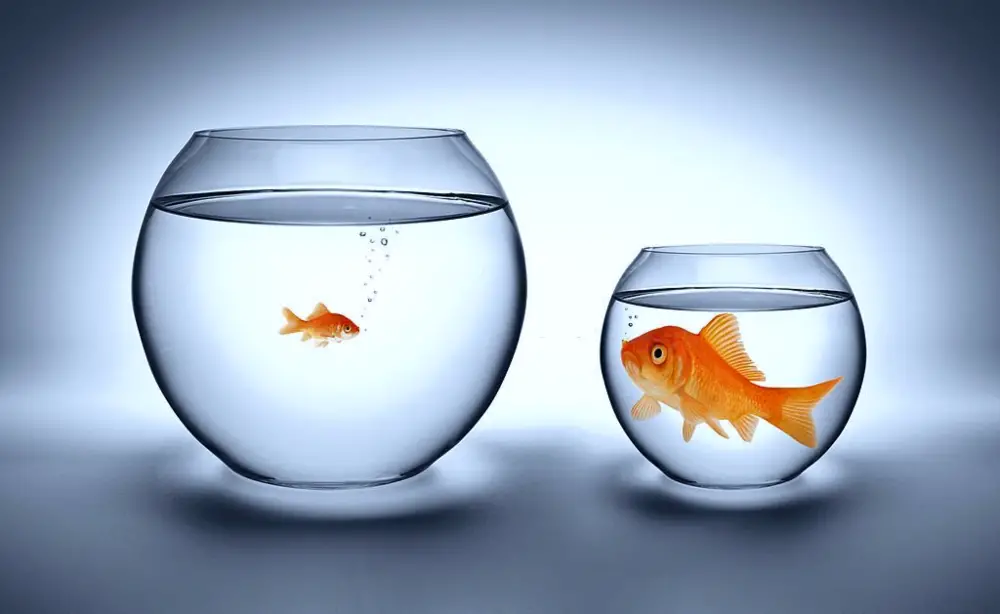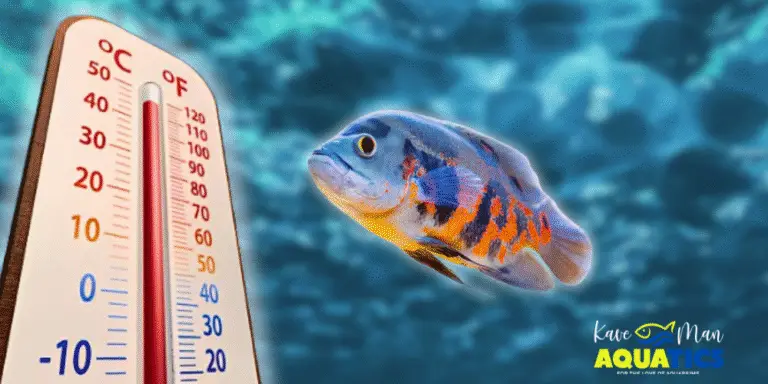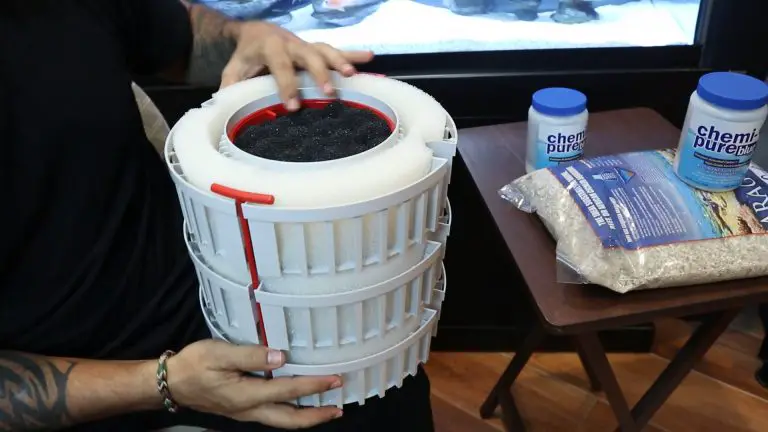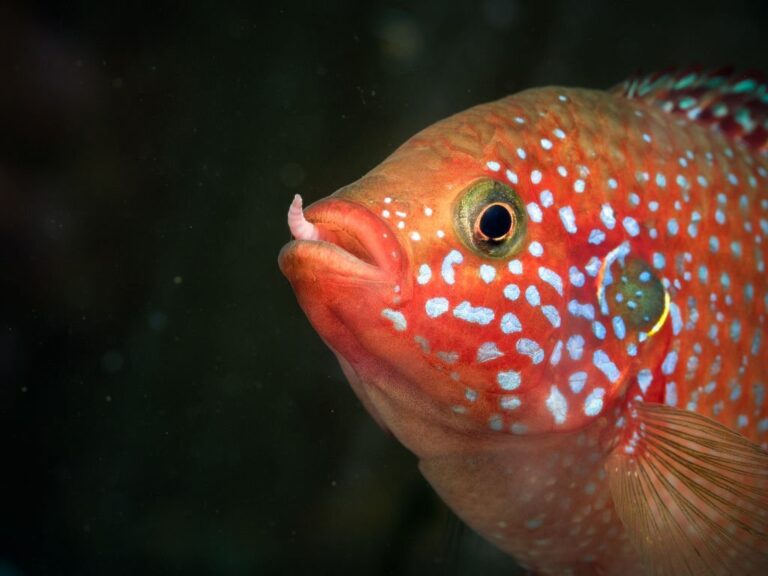How To Increase Oxygen in Fish Tank – 11 Simple Solutions
Oxygen, specifically dissolved oxygen (DO), is an important indication of water quality since it is required for the survival of fish and other aquatic species. You need to know how to increase oxygen in fish tank – it can be a lifesaver!
Aquatic life cannot thrive when oxygen levels go too low. As a result, if your fish tank experiences oxygen loss, it is vital to replenish the oxygen levels promptly.
A sure and quick way to increase oxygen levels in your aquarium is to increase water movement, flow, and surface agitation.
In this article, we’ll provide you with insight into everything you need to know about low oxygen levels in your aquarium. Click on the table of contents below to navigate to a specific topic.
How Much Oxygen Do Fish Need in an Aquarium?
Generally speaking, a safe oxygen level for most freshwater fish is 8.3 ppm. That said, the appropriate quantity of oxygen in a fish tank varies depending on the type of fish and the air pressure in your home (the higher the altitude, the less oxygen water can hold).
Fortunately, you don’t have to develop an exact figure based on these characteristics. Your tank’s oxygen level is adequate if your fish look active and happy, and none are gulping air from the surface.
Purchase a portable dissolved oxygen meter if you want to precisely measure the parts-per-million (ppm) of dissolved oxygen in your aquarium.
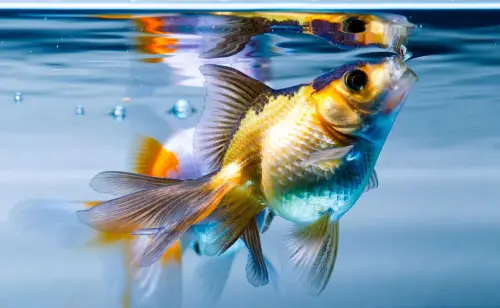
What Are The Signs Of Low Oxygen in an Aquarium?
If only our fish can communicate with us! When dissolved oxygen levels in an aquarium become too low, no flashing light or loud alert can notify you. Aside from analyzing the water for dissolved oxygen, your fish’s behavior will be the sole indicator of problems.
Here are the signs your fish will show if oxygen levels are too low:
- Increased lethargy
- Decreased appetite
- Labored breathing
- Rapid gill movement
- Gasping at the surface*
* This is not to be confused with fish eating at the surface or fish species that habitually “breathe” at the surface, such as labyrinth fish.
Other signs of low oxygen can be seen in the tank itself:
- Brown algae blooms
- Bubbles at the corner of the fish tank caused by water return
- Condensation on aquarium walls (condensation is a sign of high humidity and low oxygen)
What Causes Low Oxygen In an Aquarium?
Learn the root of the cause! If you know what caused low oxygen levels in your aquarium, you can use that insight to your advantage.
Here are a few causes of low oxygen in an aquarium:
- Overstocking/overcrowding: Too many fish will result in a lack of oxygen.
- Low water movement (or surface agitation): Surface agitation and water flow are essential to aerate an aquarium.
- High water temperatures: Water with high temperatures cannot contain as much oxygen as water with lower temperatures.
- Excess waste accumulation: Overstocking, overfeeding, and inadequate tank maintenance and cleaning can result in higher ammonia and phosphate levels, which reduces oxygen.
- Chemicals and medication: Some products have the potential to reduce oxygen levels.
How To Increase Oxygen in Fish Tank?
There are temporary solutions you can try in case of emergencies; however, there are also permanent solutions you can try for more long-term prevention. You’ll find an underlying theme as you read each solution – surface agitation. Watch the video below to learn the basics:
Temporary Solutions to Increase Oxygen Levels in Your Aquarium
Pour water from a height
This is the oldest and simplest method to increase oxygen levels and aerate water in your aquarium is to slowly pour water from a height. Fill a small container halfway with aquarium water. To produce movement, gently pour water into the fish tank from a height.
Perform large water changes
A 50% water change will allow enormous volumes of oxygenated water to enter your fish tank. Here is a step-by-step guide on how to do water changes.
Stir the water manually
Manual labor! Manually stir the water to increase oxygen levels by forcing movement inside the fish tank. You’re creating surface agitation.
Add ice cubes
Weird, right? If the cause of your dropped oxygen levels is high temperatures, then this is a solution worth trying. Adding ice cubes will assist in cooling the water. When adding ice cubes to your aquarium, always store them in an airtight bag to prevent them from melting and causing variations in your water parameters.
Use a battery-powered air pump
Yes! Air pumps are essential for aquariums in general. If you experience a power outage, battery-powered air pumps can be a lifesaver. In the case of a power outage, electric-driven air pumps will not function, while battery-powered pumps will continue to function normally.
Permanent Solutions to Increase Oxygen Levels in Your Aquarium
Install a HOB filter
The most popular and extensively used aquarium filter is a hang-on-back (HOB) filter. They are not only an excellent solution to increase oxygen levels in aquariums, but they are also small and simple to install. The HOB filter releases filtered water, which aerates and distributes evenly throughout your aquarium.
Install spray bars
Spray bars distribute filtered water around your aquarium, increasing oxygen levels. You most likely already have a spray bar if you have a canister filter, as virtually all canister filters do. So, if your oxygen levels suddenly fall and you weren’t aware you had a spray bar, now is the moment to install it.
Install air pumps
Air pumps, as the name implies, are intended to supply air (oxygen) to your aquarium. Air pumps use air stones to collect and release oxygen from the aquarium water, which makes them a simple method to increase the oxygen levels in your aquarium.
Install wavemakers
Wavemakers circulate water by breaking the surface tension of the water. This improves its oxygen content because, when the waves move across the surface of the aquarium, the wavemaker brings new air into touch with the water, allowing for gas exchange.
Install a temperature controller
Temperature controllers are a great way to monitor and modify your aquarium’s temperature.
Stock your aquarium correctly
Too many fish in an aquarium cause an increase in oxygen consumption. As a result, the oxygen content in freshwater tanks falls precipitously. One inch of fish for one or two gallons of water is a good rule of thumb for stocking a tank.
Personalized Guidance with 1-on-1 Consultations
Did you find this article interesting? Please share it with your other fishkeepers if you did! You never know who could benefit from this.

Need more personalized guidance? We understand that there is a plethora of free, generalized information on the Internet, and can be frustrating to find a specific solution. KaveMan Aquatics offers 1-on-1 consultation services. We want you to be confident in your fishkeeping journey!
-
How To Increase Oxygen in Fish Tank – 11 Simple Solutions
Unsure of how to increase oxygen levels in your aquarium? We provide all the insight you need to know; from causes to 11 simple solutions. Learn more now!

